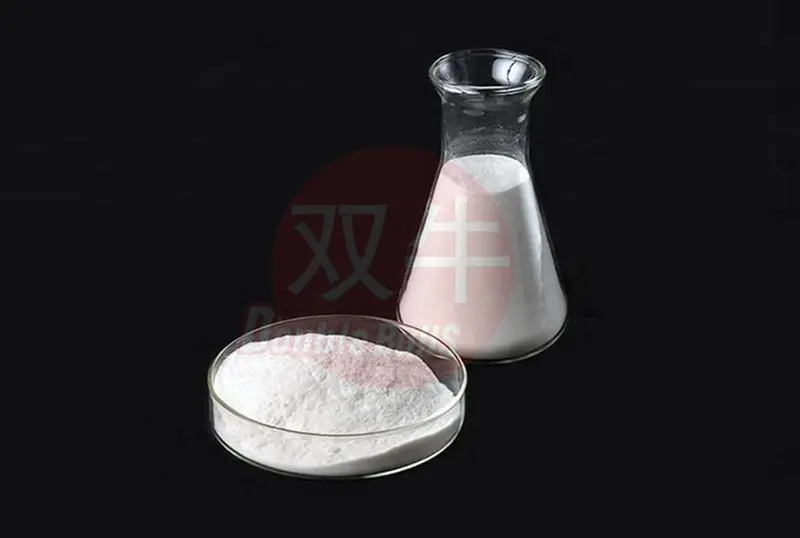cellulose etherIn daily chemical products such as laundry detergent, dishwashing liquid, laundry powder, etc., the stability of active ingredients (surfactants, enzyme preparations, functional additives, etc.) is significantly improved through the interaction between their molecular structural characteristics (such as polar groups, polymer chain networks) and active ingredients (surfactants, enzyme preparations, functional additives, etc.). The specific mechanism and mode of action are as follows:
1、 Core mechanism of action: Building a protection and regulation system
The stability of active ingredients in daily chemical products is easily affected by environmental factors (temperature, pH value, metal ions, oxidation, etc.) and the system's own state (concentration, dispersibility). Cellulose ethers form a "protective barrier" or "regulatory network" through the following mechanisms:
Molecular interactions:cellulose etherPolar groups such as hydroxyl (- OH) and ether bonds (- O -) on the molecular chain can bind with active ingredients through hydrogen bonding and van der Waals forces, reducing structural damage caused by environmental changes such as high temperature and acidity.
Viscosity and dispersibility regulation: Cellulose ether increases the viscosity of the system, delays the aggregation, sedimentation, or stratification of active ingredients, and uniformly disperses active ingredients to avoid self degradation caused by excessive local concentration.
Environmental buffering and isolation: By wrapping or adsorbing, the active ingredients are isolated from external destructive factors such as metal ions and oxygen, reducing the probability of reaction.
2、 Enhancing the stability of different active ingredients
1. Stabilizing effect on surfactants
Surfactants (such as LAS, AES, etc.) are the core cleaning components of detergent products, and their stability is easily affected by temperature and electrolytes (such as Ca ² ⁺, Mg ² ⁺ in hard water), which can precipitate or fail.
Salt precipitation resistance and high temperature resistance: Cellulose ether molecular chains form a three-dimensional network in water, which can encapsulate surfactant micelles and prevent electrolytes (such as Na ₂ CO3 and NaCl in laundry detergent) from damaging the micelle structure, reducing crystallization precipitation at low temperatures or delamination at high temperatures.
Example: Adding a small amount of carboxymethyl cellulose sodium (CMC) to laundry detergent containing high concentration electrolytes can maintain uniform dispersion of surfactants within the range of 0-40 ℃, avoiding clumping or delamination.
Improving compatibility: When the product is compounded with multiple surfactants (such as anionic and nonionic), cellulose ether reduces phase separation caused by poor compatibility of different types of surfactants by adjusting the viscosity of the system, maintaining the stability of the mixed system.
2. Protective effect on enzyme preparations
Enzymes (such as proteases, lipases, and amylases) are key components of biological detergents, but their protein structures are easily inactivated by temperature, pH, and metal ions.
PH buffering and encapsulation protection: The polar groups of cellulose ether (such as hydroxyethyl cellulose HEC) molecular chains can adsorb H ⁺ or OH ⁻ in the system, slow down pH fluctuations, and maintain the appropriate pH range for enzyme activity (such as protease suitable pH 8-10). Meanwhile, the molecular network formed by cellulose ether can encapsulate enzyme molecules, reducing their direct contact with metal ions (such as Fe ³ ⁺, Cu ² ⁺) and lowering the probability of oxidation deactivation.
Improved heat resistance and stability: In high-temperature washing environments (such as above 60 ℃), the polymer chains of cellulose ether can restrict the thermal movement of enzyme molecules through steric hindrance, delay the destruction of their spatial structure (such as denaturation), and prolong the half-life of the enzyme.
3. Stabilizing effect on functional additives
Functional ingredients in washing products (such as fluorescent whitening agents, antioxidants, essence, etc.) are prone to failure due to uneven illumination, oxidation or dispersion.
Fluorescent whitening agent:cellulose etherBy adsorbing fluorescent whitening agent molecules through hydrogen bonds, it avoids structural degradation (such as fading) caused by light exposure or pH changes during storage, while ensuring uniform adhesion to the fabric surface during washing.
Essence and pigment: The viscosity increasing effect of cellulose ether can delay the volatilization of essence (reduce contact with air), prevent the aggregation and precipitation of pigment particles, and maintain the stability of product appearance and flavor.
3、 The Influence Law of Structural Characteristics on Stability Effect
The type, molecular weight, degree of substitution, and other structural parameters of cellulose ether directly affect its ability to stabilize active ingredients
Molecular weight: The network formed by high molecular weight cellulose ethers (such as HPMC, HEC) is denser and has stronger encapsulation and dispersion effects on active ingredients, making it suitable for high viscosity systems (such as laundry detergent); Low molecular weight cellulose ethers (such as low degree of substitution CMC) have better solubility and are suitable for low viscosity systems (such as dishwashing detergent) to avoid affecting the user experience due to high viscosity.
Substitution degree: Non ionic cellulose ethers (such as HPMC) have better hydrophilic hydrophobic balance and better compatibility with non-ionic surfactants and enzymes; Anionic cellulose ethers (such as CMC) carry negative charges and can bind with cationic active ingredients (such as certain softeners) through electrostatic interactions, avoiding conflicts with anionic surfactants and enhancing the stability of the complex.
Addition amount: Within the range of 0.1% to 1% (based on the total product mass), increasing the amount of cellulose ether can enhance stability, but excessive amount can lead to high system viscosity, affecting fluidity and dissolution rate during washing. It needs to be adjusted according to the product type (such as CMC addition in laundry detergent usually<0.5%).
4、 Summary
Cellulose ether enhances the stability of active ingredients in detergent and daily chemical products from multiple dimensions through intermolecular interactions, viscosity regulation, and environmental isolation. It is effective against surfactants, salt precipitation, and delamination; For enzyme preparations, buffering pH, resistance to heat and metal ions; Reduce volatilization and degradation of functional additives. The effect is regulated by molecular weight, degree of substitution, and dosage. In practical applications, suitable cellulose ethers need to be selected according to the product formula and active ingredient type to achieve a balance between stability and performance.


TEL:+86 (0311) 8444 9786
Email:sales@double-bulls.com
Email:Export@double-bulls.com
Address:No.9 Weisi Road, Jinzhou City Eco-nomic Development Zone, Shijiazhuang City, Hebei Province.

Website

Brochure

Video